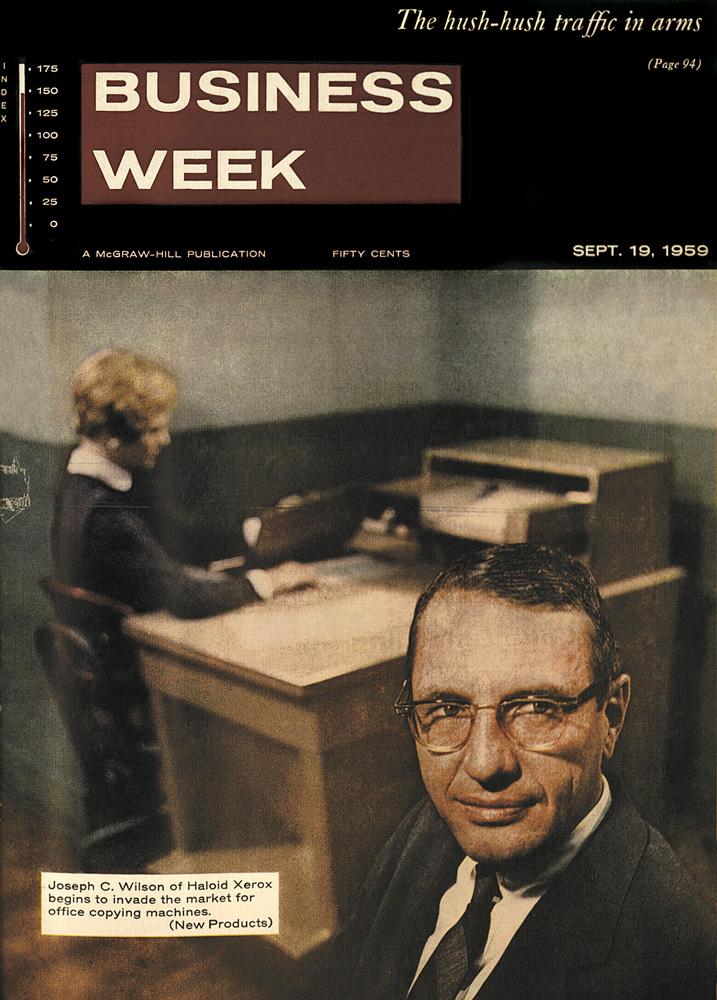A Brief History of the Photocopy in the Copyshop Era
The appearance of the Xerox copy machine (or photocopier) in the late 1950s was a turning point: a totally new means of reproducing and diffusing documents that was both cheap and easy to use. Monika Dommann highlights the machine’s subversive uses and the systematically foiled attempts by officialdom and governments to impede uncontrolled dissemination of information. Among her examples are the Xerox-facilitated Pentagon Papers leak of 1971 and photocopier appropriation by the alternative Left in Zurich during the 1980s.

« Joseph C. Wilson de Haloid Xerox commence à envahir le marché des photocopieurs de bureau », couverture du magazine Business Week, 19 septembre 1959.
Monika Dommann holds the Chair of Modern History at the University of Zurich and is a Fellow of the Collegium Helveticum. Her main areas of research include the history of material cultures, the history of intellectual property, the history of logistics and data centres, the history of the market and its fringes, the history of images and sound, and the methodology and theory of history. Her recent publications include: Autoren und Apparate. Die Geschichte des Copyrights im Medien-wandel (2014) and Acoustic Ephemeralities (special issue of the Journal of Sonic Studies, 2017).
Keywords: Xerox, copy machine, reproduction, diffusion, control, decentralisation
Citation: Monika Dommann, « Xeroxomania. Une petite histoire de la photocopie à l’ère des copyshops », Transbordeur. Photographie histoire société, no. 3, 2019, pp. 76-89.